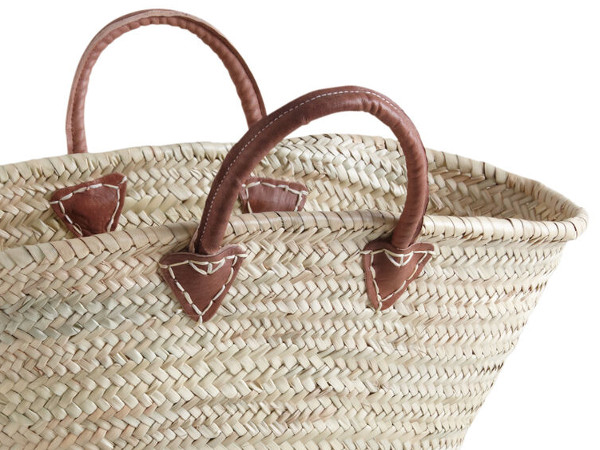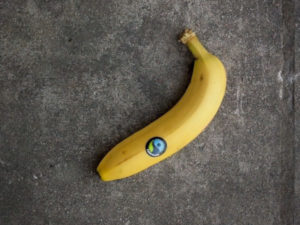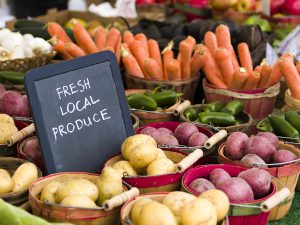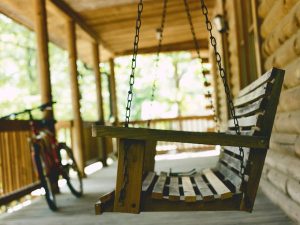Low-impact shopping - introduction

“Every time you spend money, you’re casting a vote for the kind of world you want.” – Anna Lappé
Contents
What is low-impact shopping?
Shopping is one of the most environmentally-damaging things that humans do, so reducing its impact is vitally important. The sheer scale of it is constantly increasing, and we are forever being pestered to buy more by the advertising industry. Products contain more and more unhealthy, polluting, non-biodegradable ingredients; and then there’s the huge growth of just a few retailers who dominate our economies, concentrating wealth and power in a way that seriously damages democracy and decimates small businesses.

Shop local: this local shop in Buckinghamshire provided locally-produced honey, free-range eggs, fruit, vegetables, bacon, sausages and firewood, until competition from an out-of-town superstore closed them down. There are strategies to preserve and re-introduce local shops, which are essential for strong, vibrant communities.
But it doesn’t have to be like that. We have a choice in how or whether we spend our money. There’s a positive aspect to it – supporting products and companies we approve of; and a negative one – boycotting products and companies we disapprove of.
We all have to shop to get the things we need – unless you’re a self-sufficient smallholder or a hunter-gatherer; but if so, I guess you’re not reading this, and don’t need this advice anyway. Good luck to you.
There are 3 main features of low-impact shopping:
Shopping less
This is linked with ‘downshifting’, which involves earning and spending less. It’s about deciding that you just don’t need a lot of stuff that’s on offer, but it’s also about buying more durable products that last longer, buying things with less packaging, and doing things yourself, like producing your own food, crafts etc.

Shop less: have a go at growing some of your own food – in your garden, in tubs or window boxes, or if you’re really ambitious, you could apply for an allotment.
Green / ethical shopping
It’s about buying products that are recycled (including second-hand), biodegradable, organic, fair trade, and contain natural ingredients. And coming at it from a negative perspective, it’s also about boycotting products and companies associated with things such as environmental damage and pollution, sweat shops, toxic ingredients, animal cruelty, working with oppressive regimes and arms manufacturing. Nestlé have been targeted because of their spreading of disinformation about powdered milk vs breastfeeding in Africa; Amazon have been targeted too, for lots of reasons.
Local shopping
Shopping at local, independent shops rather than giant chains, and buying locally-produced goods rather than goods that have been flown half-way round the world.

Possibly the best low-impact shopping advice, from Adbusters.
What are the benefits of low-impact shopping?
Shopping less
Shopping less means less production, land use, resource use and transport – all of which involve environmental damage to a certain degree. It can also make you healthier and happier, as you reduce stress by having to earn and spend less, and ignoring advertising, which is designed to make us dissatisfied and unhappy.
Green / ethical shopping
Helps to reduce pollution and environmental damage, and to improve the lives of exploited people. Boycotts really work – they force companies to change their ways. Also, if you avoid nasty ingredients in food, bodycare and other products, it will be much healthier for you and your family.

Green / ethical shopping: check the ingredients for nasties. Every purchase you make is a vote for or against certain products, companies, activities and/or ingredients – and it works – companies are very responsive to customer preferences.
Local shopping
Small, local, family-run shops are being put out of business by big supermarkets. Independent grocers have fallen from over 120,000 in 1960 to less than 20,000 now. That means more money concentrated in just a few enormous companies – which overflows into the political system, preventing real democracy. So many things that supermarkets do are damaging – flying goods around the world, squeezing suppliers to increase profits, concreting green belts, requiring customers to drive due to their out-of-town location, selling only the products of giant corporations – damaging democracy even more. And yet they control 80% of the UK grocery trade, and are aiming for 100%. And shopping malls are full of corporate chains that look the same wherever they are – boring as well as damaging.
Local shops spread money more evenly, provide more (and more satisfying) employment, sell more locally-produced goods, and you can walk to them. Locally-produced goods don’t have to travel so far to the shops, reducing transport and all the resource use, pollution and CO2 emissions associated with it.
Perhaps most importantly, local shops build community.
The story of Earth.Food.Love, the UK’s first zero-waste shop.
What can I do?
First you have to get into a certain mindset, which involves ignoring the dominant messages in society – to earn more, consume more, buy brands etc. It’s very difficult, and involves a slow change in habits, until you get to the point where TV adverts, shopping malls and T***o make you feel slightly unclean. It’s difficult in today’s world, but we think it’s worth getting there.
Even when you’ve decided to do it, there’s a lot of ‘greenwashing‘ around, so you have to be careful when it comes to low-impact shopping.
Shopping less
First think carefully about whether you actually need something. Can you do without it or find/make an alternative? Buying unnecessary eco-gadgets isn’t green or low-impact shopping, it’s just consumerism.

Following trends wastes resources as well as money, and will embarrass you when looking at old photos.
Tips: don’t believe the hype of the advertising industry – learn to ignore it; don’t follow fashion, an industry that tries to shame people that are wearing clothes that they’ve decided are not in fashion (it’s just an attempt to make clothes more disposable and to make more money); don’t go food shopping when you’re hungry; use libraries and freebie websites – see the bottom of this page; buy more durable goods – they may cost more, but they’ll save you money in the long run; re-use things like envelopes, glass jars etc. – be creative.
You can provide yourself with many of the things you need without shopping by doing-it-yourself – for example crafts, natural cleaners, bodycare products, soap, and of course, food. See our list of topics, and just browse to find something you fancy.
And you can boycott the shopping bonanza that has taken over Christmas. There’s nothing about Christmas that says you have to spend lots of money – we’ve been persuaded to do it by big business. Make a pact with your friends (how often do you get what you want anyway?) – spend time instead of money, make them something, give them a fruit tree or vegetable seeds, and instead of a card, send a charity e-card.

Adbusters are adept at subtly revealing the absurd and unhealthy nature of the advertising industry.
Green / ethical shopping
Do your homework – there are lots of different ratings, certification and labelling schemes; they change regularly, and some are more reliable than others (e.g. some are voluntary, or run by the companies themselves).
Do a bit of reading – other people have done the hard work for you, for example the Good Shopping Guide or Ethical Consumer magazine and website, which contains reviews and ratings for thousands of products and companies. They look at materials used and energy-efficiency as well.
Check the ingredients list. It’s a minefield, but you’ll quickly get used to it. Avoid nasty ingredients like aspartame, chlorine, or ethy-/butyl-/alkyl-anything. For a detailed look at the ingredients in your shopping, have a look at What’s Really in Your Basket, which covers thousands of ingredients – natural and synthetic – and gives an easy red, amber and green code for health risks.

Here’s an article with more than enough reasons to boycott Amazon.
You can also go for organic, fair trade and recycled (including second-hand) if you can, and donate unwanted goods to second-hand shops.
And try to avoid anything disposable – including taking your own bag shopping with you.
Local shopping
You’ll need to do a bit of research into what local shops you have, and if you have a local market day, veg box scheme or farmers’ market. Farmers’ markets are just markets on the continent. We only see them as something special because we’ve gone so far in the opposite direction.
You can also check your food miles, and try to buy more local food that’s in season. Plus why drink Californian or Australian wine when Europe produces so many fantastic wines?
Shopping local may not be easy, as so many small shops have been put out of business by supermarkets, but try and see it as a little low-impact shopping adventure. It can also be more expensive (although not always), but if you cut your overall consumption it should be do-able, and as more people do it, prices will come down.

Car-centred supermarket shopping causes pollution, concentrates wealth and destroys community.
Two other points need to be made. Firstly, buying from co-operatives is a good way to help build a new kind of economy, where people and community is more important than returns to shareholders; and secondly, the exchange medium you use for shopping is important too. It’s debatable whether lasting change can be achieved within the current debt-based money system. Mutual credit provides an alternative. Expect mutual credit and other alternatives to bank money to gain traction in the coming years.







